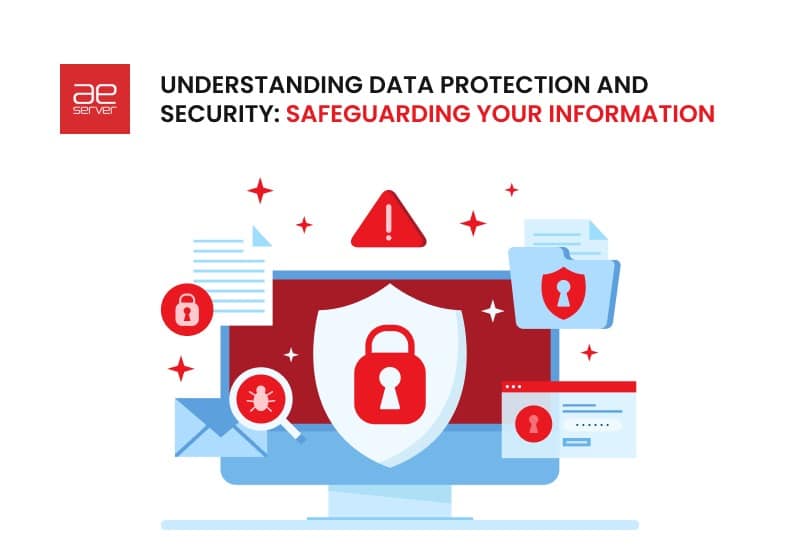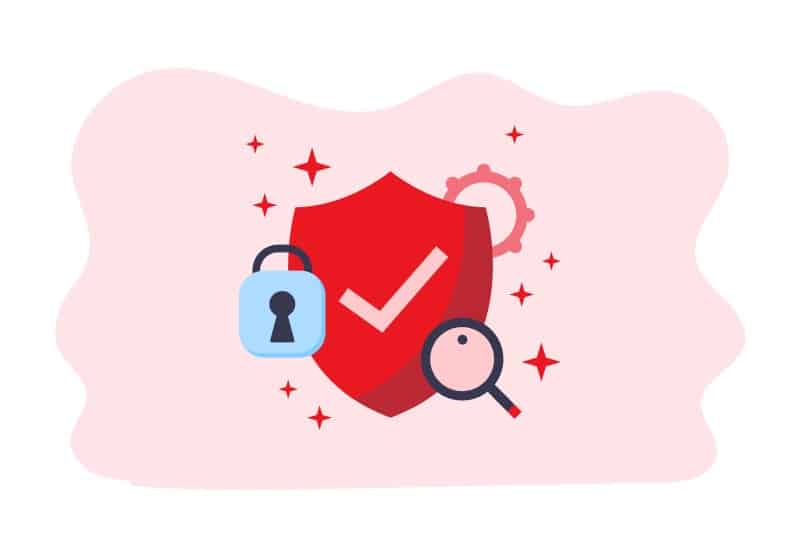
Understanding Data Protection and Security: Safeguarding Your Information
We live in an age defined by digital interconnections and information sharing. The importance of records defense and security acts as an impenetrable shield. It protects the very essence of our modern life — information. The need to understand and master the art of protecting our material has never been more acute. Understanding the details of safety and security is very important. Information is a weapon, so its safety is paramount. Many tools protect our priceless personal and professional information from the prying eyes of cyber threats. But how do you choose the data protection that’s right for you? How can records be protected anyway? Is it better to do it yourself or entrust it to professionals? We will try to help you figure it out. Join us on this journey. Learn how to save your records.
What Is Data Protection: a Critical Overview
Records defense is about practice, regulation, and technology. They are designed to protect confidential information from unauthorized access, use, disclosure, alteration, or destruction. This is a critically important aspect of modern society. Everyone is now dependent on digital technologies and the collection, processing, and storage of vast records.
A critical review of material safeguarding involves understanding its key components, issues, and implications.
Key components of data protection and security:
- Data privacy. They are ensuring that individuals are in control of their data.
- Data security. Implementation of measures to prevent unauthorized access, breaches, and data leakage.
- Data collection and processing. They are establishing guidelines for transparent and lawful material collection and processing.
- Consent. They obtain informed and explicit permission from individuals before collecting and using their data.
- Rights of data subjects. Giving individuals the right to access, correct, delete and restrict the processing of their data.
- Accountability. Organizations are responsible for compliance with detailed safety laws and regulations. They can be punished for not complying with them.
Challenges in records defense:
- Rapid technological progress. As technology evolves, so do new details and safety challenges. These can be IoT devices, AI, and biometrics.
- Global data stream. Data is often transferred across borders. This leads to difficulties in providing permanent protection.
- Data breaches and cyber security. Material breaches’ increasing frequency and complexity underscores the need for robust security measures.
- A balance between privacy and innovation. Striking a balance between protecting privacy and enabling data-driven innovation can be difficult.
- Legislation and regulation. Different countries have different data protection laws, which leads to compliance issues, especially for multinational organizations.
Implications of records safety:
- Personal rights. Material safety gives individuals control over their personal information.
- Business practices. Organizations must adopt privacy principles by design. They must implement records defense measures and ensure transparency.
- Legal and regulatory implications. Failure to comply with data protection and security laws can result in hefty fines and reputational damage.
- Trust and reputation. Organizations that prioritize material safety are more likely to build trust. They will maintain a positive reputation among customers.
- Innovation and research. Adequate details safeguarding ensures ethical and responsible use of material. It promotes innovation while respecting privacy.
In recent years, there have been significant changes in records defense. These rules have spurred global debate and action. They are aimed at improving material safety practices and creating a digital ecosystem.

What Does Data Protection Do: Key Objectives
Records defense serves several vital purposes. They aim to ensure confidentiality, security, and responsible use of information. These goals are designed to create a structure that protects people’s rights. It also strengthens trust in data processing by organizations. The primary purposes of records safety include:
- preservation of confidentiality;
- data security;
- informed consent;
- transparency;
- rights of material subjects;
- accountability and governance;
- minimization and limitation of goals;
- cross-border data transfer;
- Data Protection Impact Assessment (DPIA);
- data breach notification;
- encouraging the ethical use of data;
- trust and confidence of consumers.
These goals work together to create a records security framework. The main goal is, of course, safety. Feeling safe is vital in both the physical and digital worlds. Material defense is critical. The goal is always your well-being and comfort.
Preservation of confidentiality
Detailed safeguarding aims to support people’s right to privacy. It occurs by regulating personal information collection, processing, and storage. This ensures that organizations collect material for specific, legitimate purposes. They do not violate people’s privacy. This ensures that data is only collected for specific, legitimate purposes. They are not used in a way that violates people’s privacy.
Informed consent
What does data protection do? Material defense emphasizes obtaining informed and explicit consent from individuals before collecting material. Support ensures that people know how their information will be used. This gives them the right to make informed decisions about their use.
Data Protection Impact Assessment (DPIA)
Organizations may need to conduct DPIA to assess potential risks. This process helps identify and mitigate potential privacy risks.
Encouraging the ethical use of data
Detailed safeguarding promotes the responsible and ethical use of data. This encourages organizations to consider wider social and ethical implications.
These goals balance the needs of organizations to process information for legitimate purposes. They help you maintain control over your personal information.
Data Protection and Security
Material defense and security are two closely intertwined concepts. They play a crucial role in protecting confidential information. Although they are different, they often work in tandem. This helps create a comprehensive framework for data management.
Records safety concerns the overall structure, practices, and regulations. They aim to ensure the proper handling of personal and confidential records. His primary focus is on protecting people’s rights. Critical aspects of data protection include
- Obtaining informed consent before material collection and processing.
- Implementation of measures to ensure transparency of records processing practices.
- Granting individuals rights to access, correct, and delete their information.
- Limitation of data processing activities to lawful and defined purposes.
- Establishing accountability and governance in organizations.
Records security is a subset of records safety. It refers to the technical and procedural measures taken for safety. This involves implementing security measures to prevent loss. Data theft or compromise. Critical aspects of material security include
- Encryption: converting data into a secure format to prevent unauthorized access.
- Access control: restrict access to data to authorized personnel only.
- Firewalls and intrusion detection systems: monitoring and preventing unauthorized access to the network.
- Regular security audits: assessment and detection of vulnerabilities in data processing processes. Incident response plans outline the actions to take during a data breach.
Detailed safeguarding focuses on creating a legal and ethical framework for data processing. Data security focuses on the technical implementation of measures to prevent breaches. Both are important to ensure compliance with material defense laws.
They create a reliable and holistic approach to managing and protecting confidential information.

Example of Data Protection Act
The Details Protection Act (DPA) is a regulatory framework. It sets guidelines and rules for data privacy and security. Below is an example of the Data Protection Act, outlining its main provisions.
- Chapter 1: Short Title and Introduction. This Act may be cited as [Name of Jurisdiction]. Data Protection Act from [year] and enters into force on [date].
- Chapter 2: Purpose and Tasks. This Law aims to create a comprehensive basis for protecting personal records. The objectives of this Law are to regulate the processing of personal data. In addition, the purpose is to establish the rights of material subjects. It also aims to promote responsible records processing practices.
- Chapter 3: Lawful and fair processing. Organizations process personal data legally, fairly, and transparently. Records controllers must provide clear and accurate information to record subjects.
- Chapter 4: Limitations of Purpose. Organizations collect and process personal data for specified and lawful purposes. Any further processing must be compatible with the original purpose. It should also be subject to additional consent, if necessary.
- Chapter 5: Data Minimization. Material controllers must ensure that the collection of personal records is appropriate.
- Chapter 6: Accuracy and Timeliness. Personal data must be accurate. Organizations must update and process them in a way that ensures their integrity. Organizations must correct inaccurate or outdated data with minimal delay.
- Chapter 7: Right of Access. Data subjects have the right to access their data. They also have the right to receive information about their processing.
- Chapter 8: Right to rectification and erasure. Material subjects have the right to request the correction of inaccurate material.
- Chapter 9: Right to object and restriction of processing. Data subjects have the right to object to certain types of processing.
- Chapter 10: Safety Precautions. Data controllers must take appropriate technical and organizational measures. They help ensure the security of personal data.
- Chapter 11: Notification of a Data Breach. Records controllers must immediately notify the supervisory authority during a personal material breach.
- Chapter 12: Transfers to third countries. Organizations may only transfer personal data to third countries that provide appropriate protection.
- Chapter 13: Supervisory Authority. An independent supervisory body monitors and ensures compliance with this Law.
- Chapter 14: Penalties. Failure to comply with the provisions of this Law may result in administrative fines.
Disclaimer. This example of the Data Protection Act serves illustrative purposes only. It is not an actual legal document. Specific provisions, terminology, and requirements may vary. When drafting or interpreting any legal document, must consult with relevant professionals.
Bottom Line
In today’s digital environment, records safety is of paramount importance. Protecting personal information is not just a legal obligation. This is a commitment to respect confidentiality. It will also help to earn trust and adhere to ethical standards. With transparent data processing, we are laying the foundation for a secure digital future. To ensure reliable data protection, you should follow the guidance of the law. Always carefully read the terms of the transfer of personal data. You can also turn to professionals to help you figure out all the subtleties. Contact the experts if you need protection against malware. We can also help protect your website. In this way, no one can harm your records.
Frequently Asked Question
-
Why is data protection important for businesses?
Data protection is crucial for companies. This helps protect customer trust. It also helps prevent reputational damage from data leaks.
-
What are the common data protection measures for individuals?
People can protect their data by using strong passwords. You can also enable two-factor authentication. You can also update your software regularly and avoid suspicious links.
-
What are the consequences of a data breach?
A data breach can lead to financial losses, legal liability, and reputational damage. It will also lead to loss of customer confidence and regulatory fines.
-
How can organizations ensure data protection compliance?
Organizations can ensure data protection compliance. They will implement robust security measures by conducting regular risk assessments.



